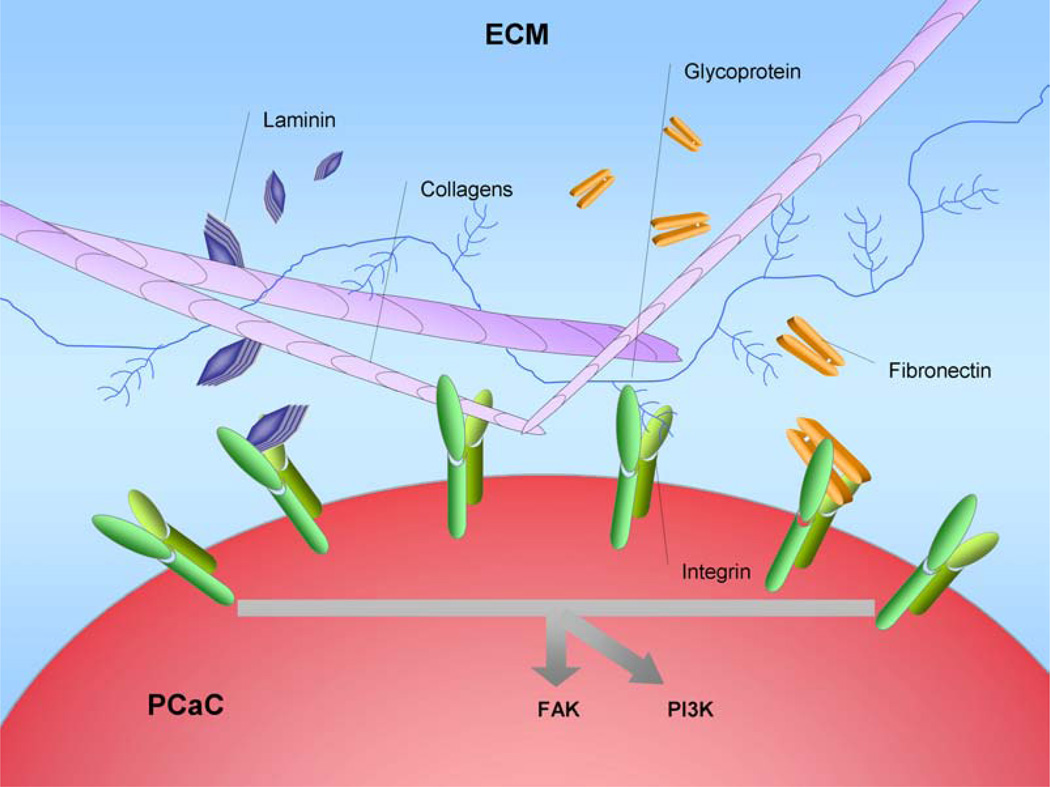Fig. (4). Excess extracellular matrix (ECM) production in pancreatic tumor microenvironment.
From a histologic standpoint, the prominent stromal reaction in the pancreatic tumor local microenvironment is one of the most remarkable characteristics of pancreatic cancers, and the stroma is thought to be an active participant in the process of pancreatic cancer initiation, progression, metastasis and chemoresistance. Increased deposition of the ECM, which is mainly composed of collagens, glycoproteins, proteoglycans, proteinases, and growth factors, is the culprit of this desmoplastic reaction. Most members of the ECM, including collagens, fibronectins, and laminins, can bind to integrins, a large family of type I transmembrane heterodimeric receptors that play key roles in downstream cell processes. When several members of the ECM bind to integrins, they then cause the activation of multiple downstream signaling cascades, which include the Src–FAK, Ras–MEK–MAPK, and PI3K signaling pathways that control biological and cellular functions such as cell adhesion, migration, proliferation, cell differentiation, and apoptosis. A more complete understanding of the interactions between the altered ECM surrounding tumor cells and pancreatic ductal adenocarcinoma will help to elucidate the mechanisms of tumor biological behaviors and to develop new targets for pancreatic cancer prevention.

